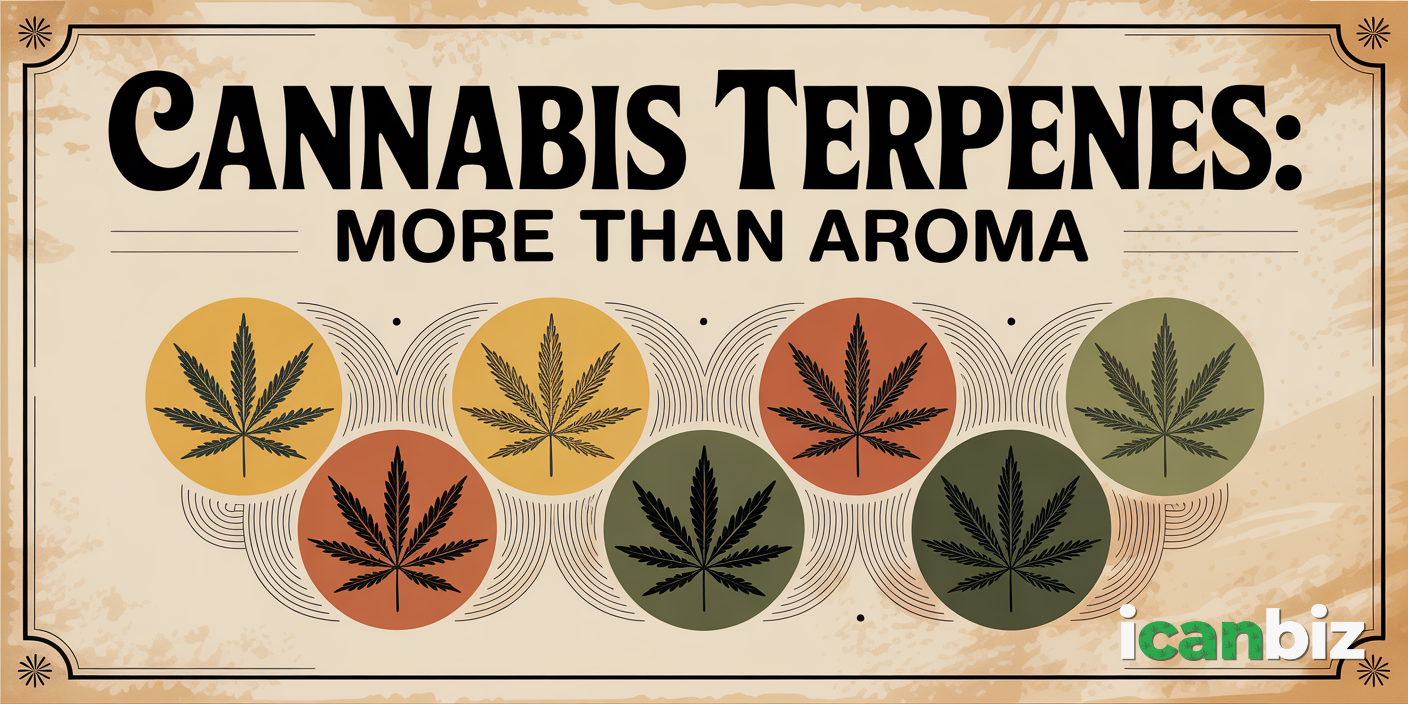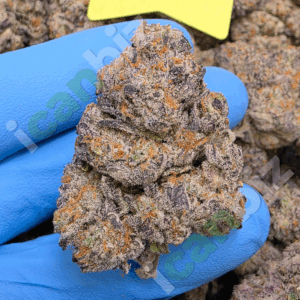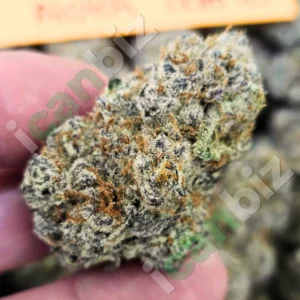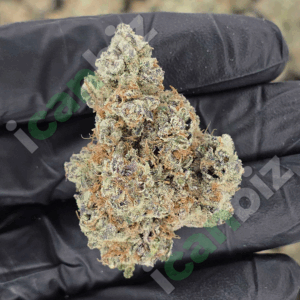The Definitive Guide to Cannabis Terpenes

Cannabis terpenes are aromatic compounds that define the scent, flavor, and therapeutic effects of raw cannabis buds, enhancing the entourage effect with non-psychoactive THCA. Key terpenes like myrcene (relaxing, earthy), limonene (uplifting, citrusy), and pinene (focus-boosting, piney) offer benefits such as anxiety relief, anti-inflammation, and mood elevation. Choose strains with lab-tested profiles for optimal wellness and personalized experiences.
What Are Terpenes and Why Do They Matter?
If you’ve ever wondered why different cannabis strains smell and taste so distinct, like one reminds you of fresh citrus fruits while another hints at pine or lavender, that’s thanks to terpenes. But what exactly are these terpenes, and why do they matter so much for your cannabis experience?
Simply put, terpenes are chemical compounds found not only in the cannabis plant (also commonly referred to as the cannabis plant, which is a major source of terpenes) but also in a bunch of other plants you probably already know—think citrus peels, pine trees, or even lavender. Terpenes are also key components of essential oils, contributing to their aromatic and therapeutic properties. These tiny aromatic molecules are responsible for the unique flavors and aromas we love, but they don’t just stop there. Terpenes play a key role in shaping the effects you feel when you use cannabis, interacting alongside other compounds like THC and CBD to influence your overall experience. Each cannabis terpene found in different strains contributes to specific scent profiles and therapeutic benefits, making them important for both aroma and medicinal effects.
Terpene Profiles: What They Really Tell You
You might have heard the term “terpene profile” tossed around when people talk about cannabis strains—but what does it actually mean? Think of a terpene profile as the unique “fingerprint” of aromatic compounds each strain carries. Just like no two people smell exactly the same, every cannabis strain has its own mix of specific terpenes that shape how it smells, tastes, and even feels. The plant’s terpenes not only create the distinctive aroma of each strain but also play a significant role in its medicinal effects.
Different strains bring different terpene profiles to the table. Cannabis plants produce a wide variety of terpene profiles. Some are bursting with limonene, which gives off a fresh citrusy vibe and might make you feel more uplifted and energized. Others are rich in myrcene, known for its earthy aroma and relaxing, calming effects. These terpene combinations work together with your body’s own human endocannabinoid system, influencing the therapeutic effects you get from a particular strain. In fact, the specific terpene profiles can directly impact the medicinal effects of cannabis.
Terpene Classification: Monoterpenes, Sesquiterpenes, and Beyond

When it comes to the world of cannabis plants, not all terpenes are created equal. Terpenes can be grouped into several categories based on their molecular structure, and each class brings its own set of effects and benefits to the table. The most common types you’ll encounter in cannabis are monoterpenes, sesquiterpenes, and, to a lesser extent, diterpenes.
Monoterpenes are the most abundant terpenes in cannabis plants. These highly volatile compounds are responsible for the plant’s vibrant aromas and flavors—think the zesty punch of limonene or the fresh, piney aroma of pinene. Monoterpenes are known for their ability to quickly interact with the human body, often providing uplifting or anti anxiety properties. For example, limonene is a monoterpene that’s been linked to mood elevation and relief from anxiety disorders, making it a popular choice for those seeking a brighter outlook or a little extra calm.
Sesquiterpenes are less volatile than monoterpenes, which means their effects tend to be more subtle and longer-lasting. These terpenes, like beta-caryophyllene, are often associated with anti inflammatory properties and can play a significant role in managing mood disorders and chronic discomfort. Beta-caryophyllene, for instance, is unique in that it interacts directly with the body’s endocannabinoid system, offering both anti inflammatory and potential mood-stabilizing effects.
Diterpenes are the least common in cannabis, but they’re still worth mentioning. These larger molecules have been shown to possess anti inflammatory properties and may contribute to the overall therapeutic benefits of certain strains, especially when it comes to supporting the body’s natural defenses.
Understanding which types of terpenes dominate a strain’s terpene profile can help you make more informed choices—whether you’re looking to reduce anxiety, manage mood disorders, or simply enjoy the nuanced effects that different cannabis strains have to offer. By tuning into the specific terpene makeup of your cannabis, you can better match your needs to the right strain and unlock the full spectrum of cannabis’s therapeutic potential.
The Most Common Terpenes Found in Cannabis
Cannabis may be famous for THC and CBD, but it’s the plant’s terpenes that add depth, personality, and a surprising amount of influence over how each strain actually affects you. Terpenes can also modulate the psychoactive effects of cannabis, working alongside cannabinoids like THC to shape your mental state and experience. Below, we break down some of the most prevalent terpenes found in popular strains.
1. Myrcene – Earthy, Sedating, and Soothing
If you’ve ever caught a musky, earthy aroma in your favorite strain, you’re probably smelling myrcene. This terpene is known for its deeply relaxing, almost couch-lock-inducing effects—making it a key player in many Indica-dominant strains.
Myrcene is thought to enhance the effects of THC and help with sleep, muscle tension, and anxiety. It’s one of the most prevalent terpenes in cannabis, and it also naturally occurs in hops, thyme, and lemongrass.
2. Limonene – Citrusy, Uplifting, and Energizing
As the name suggests, limonene brings a bright, zesty citrus aroma to the table—think lemon peels or orange rinds. But it’s not just about the smell. Limonene is linked to mood elevation, reduced stress, and even potential anti-anxiety effects.
You’ll find limonene in strains that are often described as “happy” or “euphoric,” making it a favorite for daytime use. Beyond cannabis, it’s also found in citrus fruits, rosemary, and peppermint. The Grape Bubblegum strain is also known for its limonene content, offering a citrus aroma and potential therapeutic effects such as antidepressant and anxiety-reducing properties.
3. Pinene – Pine-Scented and Brain-Boosting
Pinene smells exactly like what you’d expect: fresh pine needles or a forest after rain. But it’s more than just nostalgic—it may actually help enhance memory and reduce inflammation.
This terpene shows up in both sativa and hybrid strains and is a great choice if you’re looking to stay clear-headed, focused, and calm without the fogginess. It also appears in basil, rosemary, and—you guessed it—pine trees.
4. Linalool – Floral, Calming, and Stress-Relieving
Known for its lavender-like aroma, linalool is a terpene you’ll recognize from aromatherapy sessions and calming teas. In cannabis, it’s often associated with sedating effects and anxiety relief.
Strains with linalool are a great option for unwinding after a long day or preparing for sleep. You’ll also find this terpene in mint, cinnamon, and coriander.
5. Caryophyllene – Spicy, Grounding, and Uniquely Therapeutic
Caryophyllene has a bold, spicy scent—like black pepper or cloves—and it stands out from the rest because it actually binds to your CB2 cannabinoid receptors (unlike other terpenes). That means it may have direct anti-inflammatory and relieving effects.
It’s commonly found in strains used for stress and physical discomfort and also naturally occurs in cinnamon, basil, and oregano.
6. Humulene – Woody, Hoppy, and Appetite-Suppressing
While many cannabis strains are known to increase appetite, humulene is one terpene that may do the opposite. Recognizable by its hoppy, woody aroma—like craft beer or ginseng—it’s often found in strains designed for focus and energy without the munchies.
Also present in hops, coriander, and cloves, humulene might help reduce inflammation and support respiratory health.
Therapeutic Benefits of Terpenes
Beyond flavor and aroma, terpenes are deeply connected to the therapeutic properties of cannabis. Many found terpenes exhibit real physiological effects on the human body, from calming the mind to reducing inflammation. These natural compounds interact with the body’s endocannabinoid system, influencing how you feel, recover, and respond to different strains.
Whether you’re managing chronic discomfort, looking to reduce anxiety, or simply hoping to fine-tune your experience, understanding the therapeutic role of terpenes can help you better match strains to your desired effects.
Common therapeutic benefits include:
- Linalool – Known for its calming, lavender-like aroma. It may help reduce anxiety, promote relaxation, and contribute to sedative effects when paired with THC or CBD.
- Pinene – Offers a sharp, pine-like scent and has been linked to increased alertness, better memory retention, and support for respiratory function.
- Caryophyllene – A spicy, peppery terpene that binds to CB2 receptors in the endocannabinoid system. It may help with physical aches, sore muscles, inflammation, and stress relief.
- Limonene – Delivers a bright citrus scent and is commonly used for mood elevation, anti-anxiety effects, and digestive support.
- Myrcene – Often found in earthy or musky strains, it may enhance the effects of THC and produce strong body relaxation and physical relief.
- Humulene – Has a hoppy, woody aroma and may suppress appetite while also offering anti-inflammatory and antibacterial properties.
Recommended products
-
Acai Berry Gelato THCa Flower Wholesale
Original price was: $1,900.00.$1,700.00Current price is: $1,700.00. -
Aloha Trufflez THCa Flower Wholesale
$1,650.00 -
Beignet Blizzard THCa Flower Wholesale
Original price was: $1,800.00.$1,650.00Current price is: $1,650.00. -
Dante’s Inferno THCa Flower Wholesale
Original price was: $1,800.00.$1,650.00Current price is: $1,650.00.
The Entourage Effect: Why Terpenes and Cannabinoids Work Better Together
Terpenes don’t operate in isolation. Instead, they work synergistically with cannabinoids like THC and CBD in what’s called the entourage effect. This phenomenon explains why a strain’s effects can’t be determined by cannabinoid content alone—it’s the full spectrum of different compounds, including terpenes, that create a balanced, targeted experience.
For example, a strain high in THC might normally cause anxiety—but when paired with calming terpenes like linalool or myrcene, it can feel much more mellow. Likewise, combining CBD with limonene may offer anti-anxiety effects with greater mental clarity. This synergy is why whole-plant cannabis products are often more effective than isolates, and why understanding terpenes can be key to achieving the results you want.
Terpenes in Cannabis Products
How Terpenes Show Up Across Formats—And Why It Matters
Terpenes aren’t just found in flower. Whether you prefer edibles, tinctures, vapes, or topicals, many cannabis products now highlight terpene content as a key part of their effect profile. That’s because these aromatic compounds—just like cannabinoids—play a significant role in how a product makes you feel.
From calming sleep aids to energizing blends for focus, manufacturers are paying closer attention to terpene content to deliver more targeted effects. But not all products preserve these compounds equally.
Terpenes Across Product Types
- Flower – Naturally contains the most complete terpene profile since it hasn’t been altered by heat or solvents. When grown, dried, and cured properly, flower offers the best representation of how terpenes occur in cannabis and other plants.
- Vapes – Terpenes can be preserved in live resin or rosin vape cartridges, but some distillates lose their original terpene content during extraction. Many products add reintroduced terpenes, often sourced from other plants, to recreate specific flavor and effect profiles.
- Edibles – Most edibles don’t retain natural terpenes through the cooking process. However, some brands add botanical terpenes back in to enhance effects like sleep support, stress relief, or mental clarity.
- Tinctures – High-quality tinctures may retain natural terpenes, especially if they use full-spectrum or broad-spectrum extracts. Like vapes, some tinctures also contain other terpenes added post-extraction for specific purposes.
- Topicals – Though they don’t enter the bloodstream, topicals can still benefit from terpene inclusion, particularly for localized relief. Terpenes like caryophyllene and linalool may help soothe inflammation, muscle tension, or skin irritation.
Matching Products to Desired Effects
Some terpene-rich products are formulated to target specific needs:
- Sleep – Look for products high in myrcene, linalool, or terpinolene.
- Energy – Limonene, pinene, and ocimene may promote alertness and mood elevation.
- Focus – Pinene and caryophyllene support mental clarity and reduce distractions.
- Stress Relief – Linalool, humulene, and limonene can help calm the nervous system.
Not every product will label its terpene content, but when they do, it’s worth paying attention. Terpenes are one of the clearest indicators of how a cannabis product will make you feel.
How to Maximize the Benefits of Terpenes
Terpenes are delicate compounds that can be easily damaged or lost if cannabis isn’t stored or consumed properly. Whether you’re working with abundant terpenes like limonene or exploring a lesser known terpene with appetite suppressant or anti-fungal properties, these quick tips can help you preserve their benefits and enhance your experience with certain strains that contain high concentrations of targeted compounds.
- Choose lab-tested products that list terpene profiles. Look for testing that confirms both cannabinoid and terpene content—especially if you’re aiming for specific desired effects like focus, sleep, or relaxation.
- Look for products with high concentrations of beneficial terpenes, including lesser known terpenes with potential antimicrobial properties or appetite-related effects.
- Store cannabis in a cool, dark place—exposure to heat, light, or oxygen can quickly degrade even the most abundant terpene content in flower, vapes, or concentrates.
- Avoid excessive heat when consuming, especially with vaporizers. Set your vape to a lower temperature to preserve delicate terpenes and avoid burning them off before they can deliver effects.
- Keep cannabis in airtight glass containers, ideally with a humidity pack, to prevent terpene evaporation and protect overall potency.
- Be mindful of timing and environment. Uplifting terpene-rich strains are best for daytime use, while calming or sedative terpenes (like myrcene or linalool) are more effective in the evening or when your body is already at rest.
- Pay attention to your body’s response. Even with the same terpene profile, certain strains may feel different depending on your metabolism, mood, or setting.
The Final Hit: Exploring THCa Terpenes
Terpenes are more than just aroma—they’re the key to unlocking the full potential of different cannabis strains and tailoring your cannabis experience to your specific needs. From uplifting energy to deep relaxation, from physical relief to enhanced focus, these naturally occurring compounds play a central role in how cannabis affects your mind and body.
To get the most out of your cannabis experience, start reading Certificates of Analysis (COAs), ask your dispensary about terpene content, and don’t be afraid to experiment with different cannabis strains to find what works best for your body and lifestyle.
Use terpenes with intention, and you’ll quickly discover that they’re not just a detail—they’re the difference.

Legal Disclaimer:
By reading this information presented, you agree to release the author of any liability that comes from using this data. This post contains no legal advice. Claims about cannabinoids have not yet been approved by the FDA.
References
- https://www.nasdaq.com/articles/cannabis-market-forecast-top-trends-cannabis-2025
- https://www.expressnews.com/business/article/thc-cannabis-texas-ban-dan-patrick-sid-miller-19962200.php
- https://nypost.com/2024/09/01/us-news/bargain-buzz-ny-pot-farm-moves-100000-economical-dime-bags-under-legalization
- https://thecannabisindustry.org
- https://www.cannabisbusinesstimes.com
frequently asked questions
What are THCA flower terpenes, and why are they important?
THCA flower terpenes are aromatic compounds shaping scent, flavor, and effects in cannabis buds. Retailers, stock lab-tested strains with unique terpene profiles to attract customers seeking personalized wellness experiences.
How can retailers preserve terpene potency in THCA flower?
Store THCA flower in cool, dark, airtight containers with humidity packs. Retailers, prioritize lab-tested, properly cured buds to maintain terpene profiles, ensuring premium quality for discerning customers.
Which terpenes are most common in THCA flower?
Myrcene (earthy, sedating), limonene (citrusy, uplifting), and pinene (piney, focus-enhancing) dominate. Retailers, highlight these in product descriptions to appeal to customers seeking specific aromas and effects.
How do terpenes enhance the effects of THCA flower?
Terpenes like myrcene and limonene work with THCA to boost relaxation or mood via the entourage effect. Retailers, offer terpene-rich buds to meet demand for targeted therapeutic benefits.
Why should retailers focus on terpene profiles for THCA flower?
Terpene profiles predict effects better than strain type, driving customer satisfaction. Retailers, market strains like OG Kush (limonene, myrcene) to offer tailored experiences, boosting sales and loyalty.




